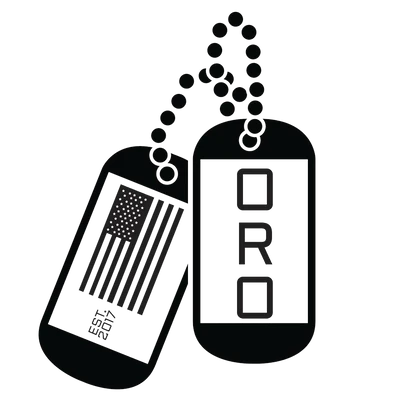Introduction to Tactical Survival Gear
Heading into the wild? You’ll want gear that’s as tough as you are. Tactical survival gear isn’t just about looking the part. It’s about practical tools and equipment that could save your life in a pinch. First things first, tactical gear is designed for durability and efficiency. This includes tough backpacks, durable clothing, reliable footwear, versatile tools, and gadgets that won’t let you down when it matters the most. Imagine this: you’re in the middle of nowhere, and you need to make a shelter, find your way back, or signal for help. That’s where a solid tactical knife, a sturdy compass, and a bright flashlight come into play. And don’t forget about water purification systems and fire-starting tools. These aren’t just items; they’re your lifeline in the unpredictable wild. In short, tactical survival gear is all about being prepared for anything Mother Nature throws your way. Equip yourself right, and the wilderness won’t seem so daunting.
Essential Tactical Gear for Wilderness Survival
When stepping into the wild, the right gear can mean the difference between a great adventure and a call for rescue. Let’s start with the basics: a durable, sharp knife. It’s your all-around tool for cutting, carving, and crucial survival tasks. Don’t skimp here. A water purification method is next. Be it tablets, a filter, or a straw, make sure you have a way to make any water safe to drink. For navigation, a reliable compass and a detailed map of the area are non-negotiable, even if you plan to use a GPS device. Fire starters, like waterproof matches or a fire steel, give you warmth and a way to cook food. Add to this list a sturdy backpack to carry everything comfortably. Remember, the wilderness doesn’t adapt to you; you need to be prepared to tackle it head-on.
How to Choose the Right Tactical Survival Gear
Picking the right tactical survival gear is all about understanding what you’re up against and what you’re trying to achieve. First off, know your environment. Will you be in the desert, mountains, forest, or somewhere colder? This affects your choice big time. You need gear that matches your surroundings – think camouflage, insulation, or UV protection. Next, consider your main activities. Hiking, climbing, fishing, or maybe an all-out survival trial? Your gear should help you do these tasks more efficiently. Look for multi-functional items to save space and weight. A good knife, water purifier, fire starter, durable backpack, and a sturdy shelter are essentials. Always check gear reviews and test them out if possible. Remember, expensive doesn’t always mean better. Go for reliability and something that feels right for you. Keep it simple, durable, and practical. That way, you’re always prepared, no matter what the wilderness throws at you.
The Role of Clothing in Survival Situations
In survival situations, what you wear is not just about looking good. It’s about staying alive. Think of your clothes as your first line of defense against the elements. They keep you warm, dry, and protected from the sun, wind, and rain. Priority number one is layering. Start with a moisture-wicking base layer to keep sweat away from your skin. Next, add an insulating layer to trap heat. Finally, top it off with a waterproof and windproof shell. Material matters too. Wool and synthetic fabrics reign supreme in the wilderness, as cotton loses its insulating abilities when wet, making it a poor choice for survival gear. So, when you pack for your next outdoor adventure, remember, smart clothing choices could literally save your life.
Tactical Knives and Multitools: Your Survival Companions
When you’re out in the wild, a good knife or multitool isn’t just handy; it’s essential. Think of them as your survival sidekicks. Tactical knives are built tough, ready for any task you throw at them, from slicing through ropes to preparing a meal. Choose one with a solid, durable blade and a comfortable grip. Now, let’s talk multitools. These compact gadgets are like the Swiss Army knives of survival gear. They pack everything from pliers to screwdrivers in one portable package. Imagine fixing your gear or fishing hooks without having to lug around a heavy toolbox. So, before you head off on your next wilderness adventure, make sure a tactical knife and a multitool are at the top of your gear list. They might just save the day, or even your life.
Water Purification Systems: Staying Hydrated in the Wild
In the wild, your water bottle won’t fill itself, and drinking directly from a stream is a gamble with your health. Here’s where water purification systems come into play. They are essential for any wilderness adventure, ensuring the water you find is safe to drink. Boiling water is one option, but it’s time-consuming and requires a heat source. Portable purification systems are a game-changer. They’re light, efficient, and easy to use. Think filters and purification tablets. Filters can physically remove bacteria and protozoa from water. Tablets, on the other hand, use chemicals to kill viruses and pathogens. Both methods have their place, depending on the situation and water source. Remember, staying hydrated is key to survival out there, but doing it safely with the right gear is just as critical.
Shelter Solutions: Tents and Beyond
When it comes to surviving in the wild, your shelter is not just about where you sleep. It’s your safe haven against weather, animals, and other outdoor elements. Let’s explore the basics. You might think tents are your only option, but there’s more to it. Tents are popular for their portability and various designs suitable for different climates and terrains. They’re your go-to for a classic outdoor experience. But let’s not stop there.
Bivouac sacks (bivy sacks) offer a lightweight alternative. They are smaller, cocooning you and your sleeping bag against the elements with minimal bulk. Ideal for solo adventurers who need to move fast and light.
For those seeking an even closer connection with nature, a tarp can be your shelter. With the right skills, you can configure it in numerous ways to protect against wind and rain. It’s the epitome of versatility in the wilderness.
However, in snowy areas, an igloo or snow shelter might be your best bet. Using the environment to your advantage, these shelters can be surprisingly warm and are an excellent choice for winter wilderness survival.
Lastly, don’t overlook natural shelters. Caves or overhangs can provide ready-made protection in a pinch. Just make sure it’s safe and stable.
In the wilderness, your shelter is more than a place to rest; it’s your ticket to making it through the night. Choosing the right one for your adventure could make all the difference. So, weigh your options, consider your environment, and always be prepared to adapt.
Fire Starters and Lighting: Essential Gear for Warmth and Visibility
When you’re out in the wilderness, staying warm and being able to see once the sun goes down are non-negotiable. That’s why items for starting fires and lighting your campsite are must-haves in your tactical survival gear. For starters, a reliable fire starter, like a magnesium fire starter or waterproof matches, can make all the difference. It’s not just about warmth; a fire can cook your food, boil water for safe drinking, and signal for help if you’re lost. As for lighting, think beyond the basic flashlight. Headlamps free up your hands for tasks around camp or hiking in low light. Solar-powered or hand-crank lanterns are also great as they reduce the need for batteries, which might not be readily available in the wild. Remember, the goal is to be prepared, not scared. So, packing these essentials means you’re ready to tackle whatever the wilderness throws at you, day or night.
Navigation Tools: Staying on Course in Unfamiliar Terrain
When you’re deep in the wilderness, knowing where you are and where you’re going is not just helpful, it’s crucial. This is where navigation tools come into play. First up, you’ve got the compass, a true friend in confusing terrain. It’s simple, reliable, and doesn’t need batteries. Pair it with a detailed map of the area, and you’ve got a winning combo. Even in the age of smartphones and satellites, this duo stands unbeatable for getting around in areas where your phone’s GPS might as well be a brick.
Speaking of satellites, let’s not dismiss GPS devices. These gadgets offer pinpoint accuracy and can save your hide in dense forests or when visibility tanks. Many are built for the rough and tumble of outdoor adventures, offering extra features like weather alerts and SOS signals. Just remember, they do run on batteries, so either keep spares handy or have a map and compass as a backup.
Lastly, don’t overlook the importance of a good old-fashioned whistle. Not exactly for navigation, but if you’re lost, blasting on one of these can help rescuers or your buddies find you. So, before you hit the trails, make sure you’re kitted out with these navigation essentials. They’re your lifeline out there, ensuring you stay on course and can always find your way back.
Packing Your Tactical Survival Gear: Tips and Tricks
When heading into the wild, packing smart is key. Start with the essentials: a durable backpack, a water filtration device, fire-starting tools, and a sturdy knife. Remember, weight counts, so opt for lightweight, multipurpose items. For example, a tactical knife can serve as a tool and a weapon. Next, add communication devices like a satellite phone or a radio, especially in areas with no cell service. Don’t overlook the importance of first aid supplies. Include bandages, antiseptics, and specific medications you might need.
Clothing is part of your gear, too. Choose layers that can keep you warm and dry. Materials like merino wool and Gore-Tex provide insulation and moisture protection without bulk. Footwear deserves special attention—pick boots that offer grip, ankle support, and are waterproof.
Consider packing space-saving food like energy bars and freeze-dried meals. These are light, easy to prepare, and nutritious. Last but not least, navigational tools such as a compass and maps, or a GPS device, are vital. Even if you plan to stick to trails, technology can fail, so having a physical backup is wise.
Remember, the goal isn’t just to survive but to do so comfortably and safely. Tailor your pack to the trip length, your expertise, and the specific challenges you anticipate. This approach ensures you’re prepared for whatever the wilderness throws your way.


